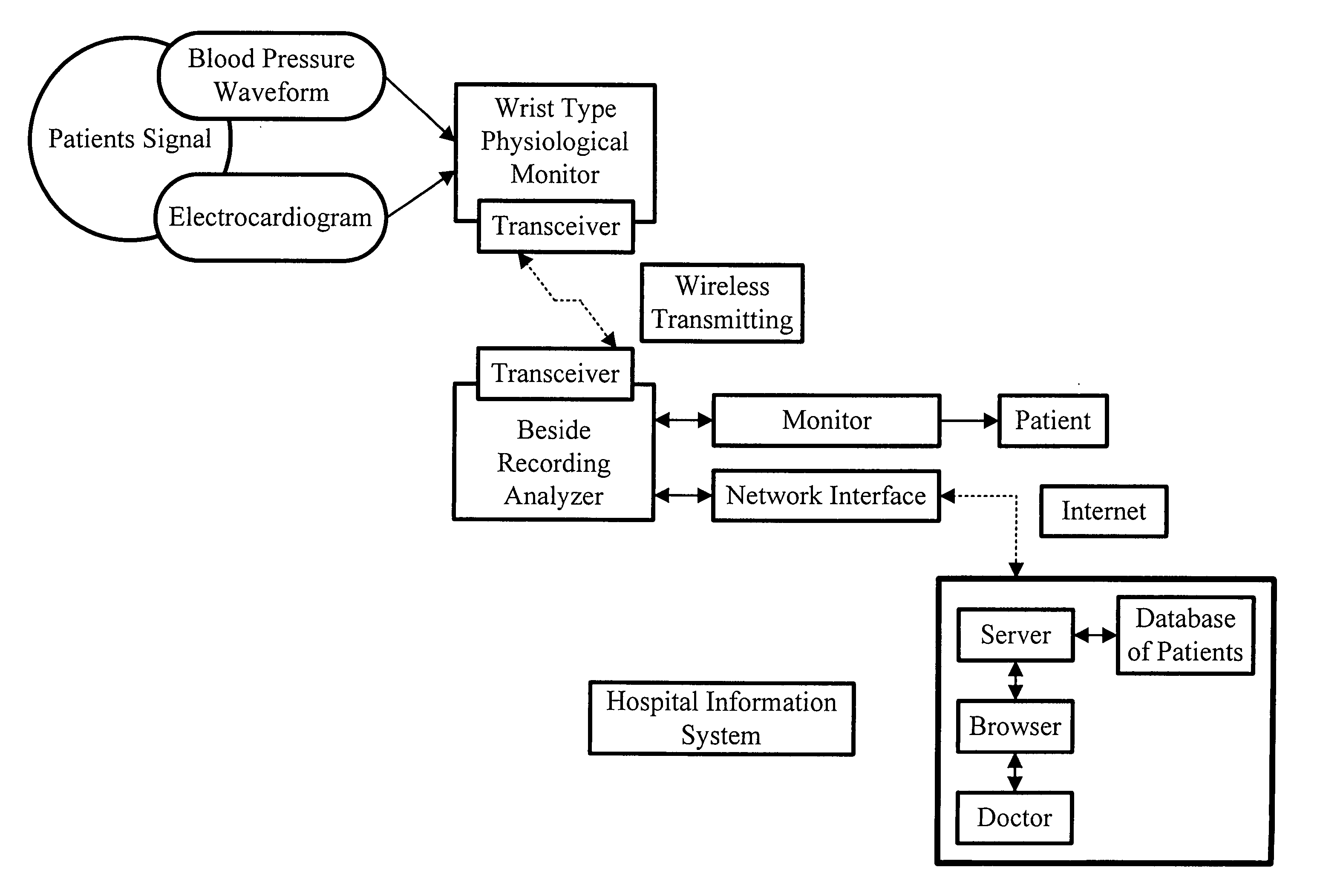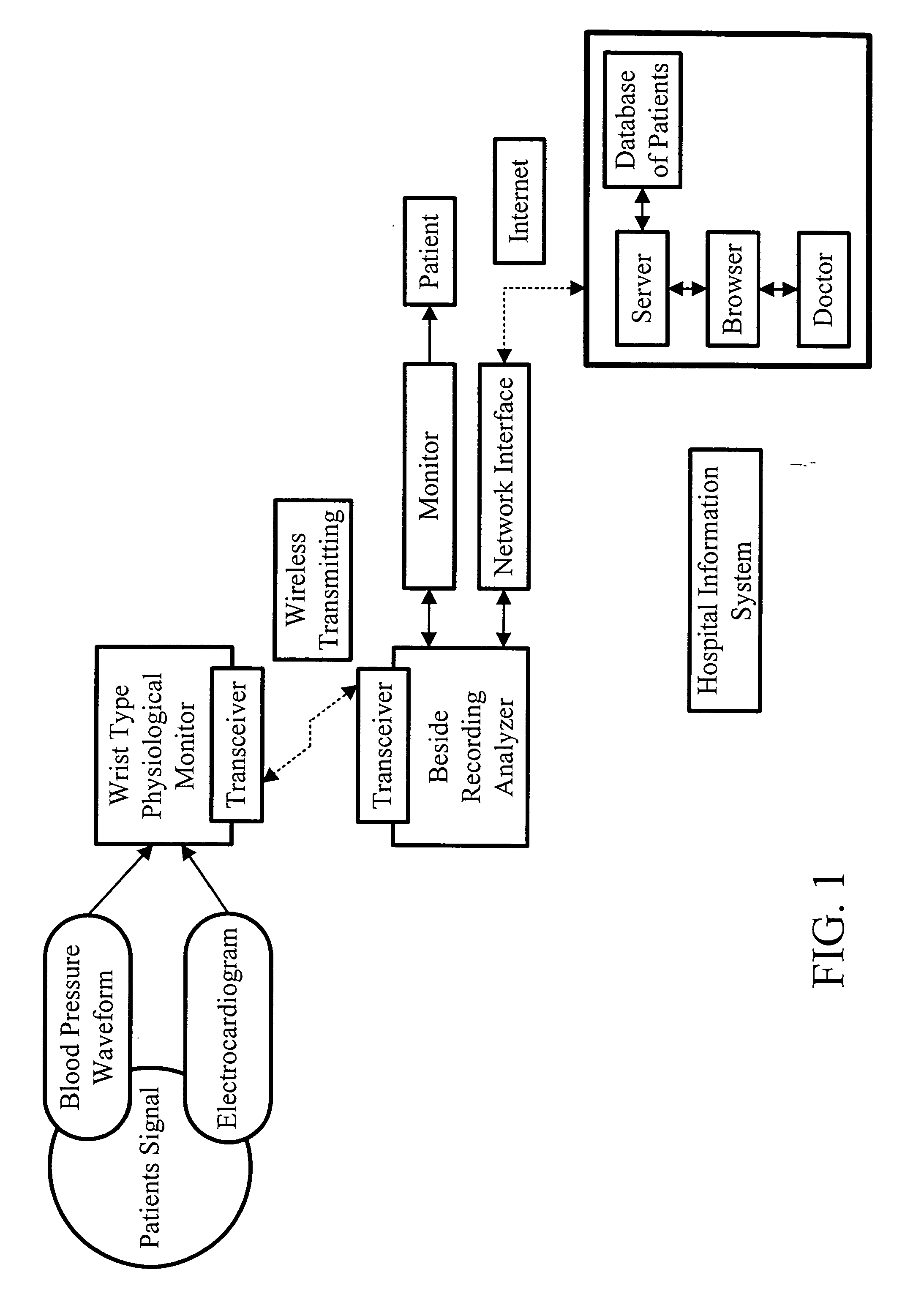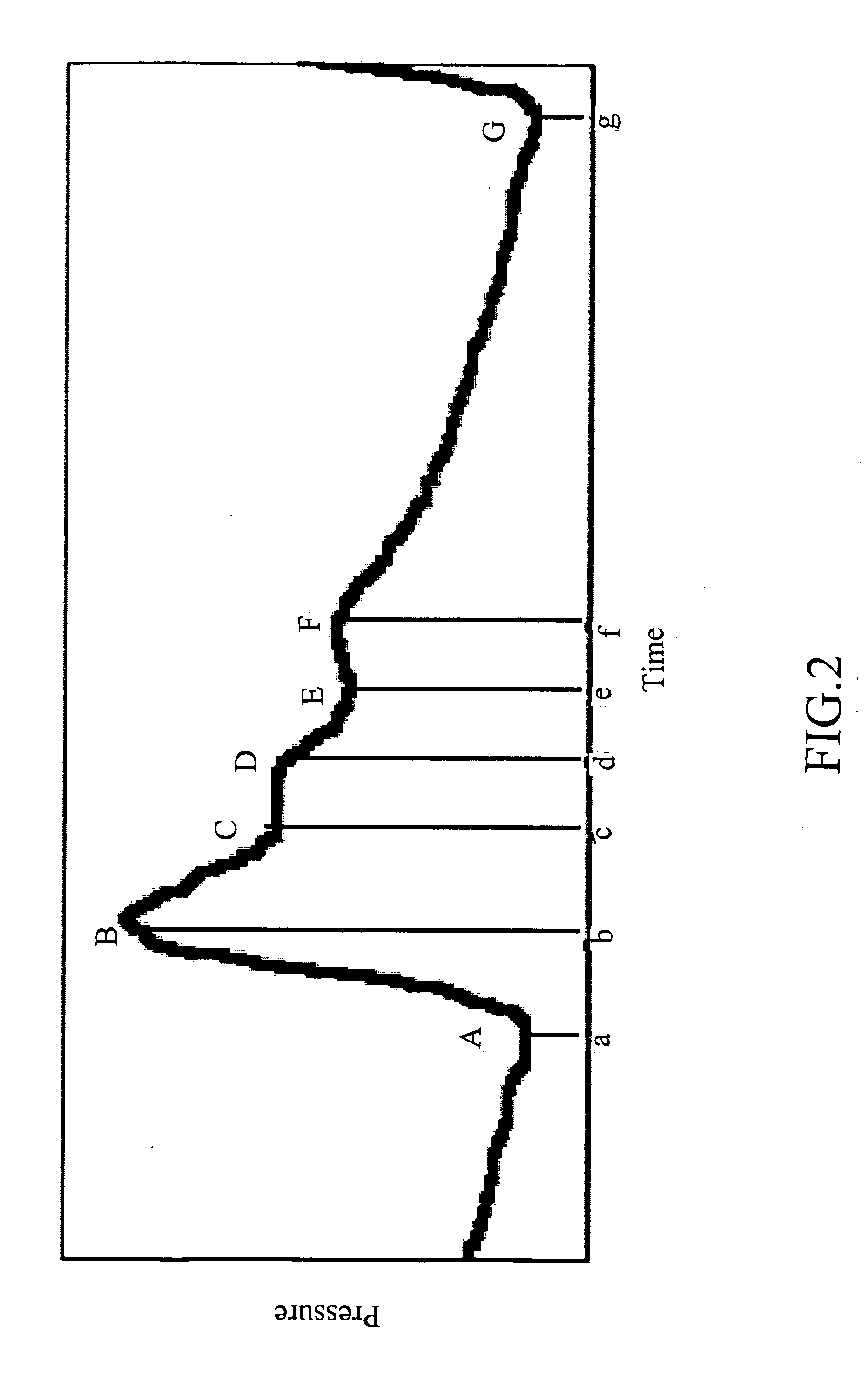Non-invasive apparatus system for monitoring drug hepatoxicity and uses thereof
a technology of hepatoxicity and non-invasive equipment, which is applied in the field of non-invasive apparatus system for monitoring drug hepatoxicity, can solve the problems of extremely low rate, severe safety concerns for very few patients, and emerging acute liver side effects
- Summary
- Abstract
- Description
- Claims
- Application Information
AI Technical Summary
Problems solved by technology
Method used
Image
Examples
example 2
Monitoring the Hepatotoxicity Induced by Drugs--Clinical Trial of Human Body
[0071] Two middle-age patients had been diagnosed to have acute hepatitis induced by unknown drugs after being outpatient serviced or hospitalized. The hepatitis level of Code A patient was minor, and the value of ALT (SGOT) was 120 (IU / liter) when the patient was hospitalized, and then the value reduced to 42 (IU / liter) and close to a normal value after treatment, rest and recuperation. The physiological signals and the blood test results are shown in TABLE 9.
9TABLE 9 The Physiological Signals And The Blood Test Results Of Code A Patient Experimental conditions Morbidity period After recovery Pulse (beats / minute) 76 65 Systolic pressure (mmHg) 110 105 Diastolic pressure (mmHg) 70 70 Body temperature (.degree. C., ear) 36.5 36.0 ALT (SGPT); IU / liter 120 42 Biliflavin MG / DL 0.5 0.4
[0072] Another patient coded B had a more severe hepatitis level, and the value of ALT (SGOT) was 603 (IU / liter) when the patient ...
PUM
 Login to View More
Login to View More Abstract
Description
Claims
Application Information
 Login to View More
Login to View More - R&D
- Intellectual Property
- Life Sciences
- Materials
- Tech Scout
- Unparalleled Data Quality
- Higher Quality Content
- 60% Fewer Hallucinations
Browse by: Latest US Patents, China's latest patents, Technical Efficacy Thesaurus, Application Domain, Technology Topic, Popular Technical Reports.
© 2025 PatSnap. All rights reserved.Legal|Privacy policy|Modern Slavery Act Transparency Statement|Sitemap|About US| Contact US: help@patsnap.com



